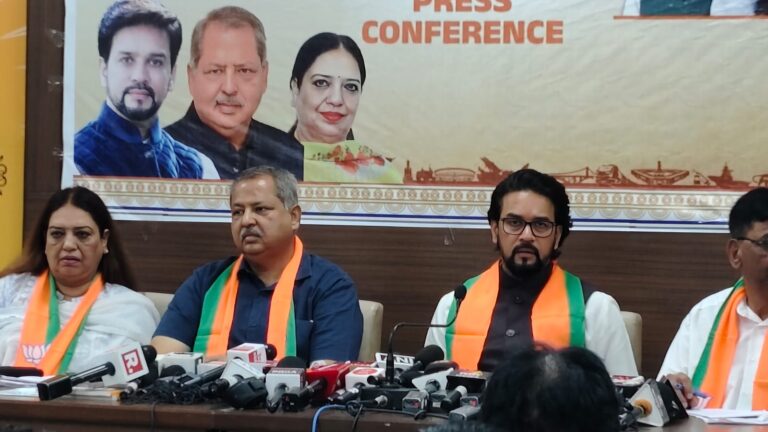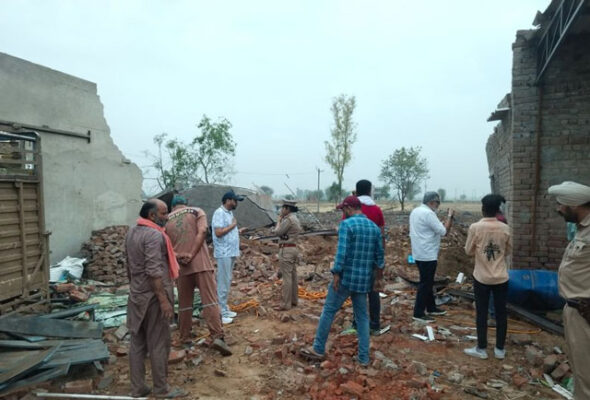
A book on Architectural Aspects of India
Chandigarh, January 12, 2024: After 40 years of experience in architecture, eminent architect Surinder Bahga brings his book, ‘Form Follows Roots – Architecture for India 1985 – 2021’. Edited by Turkey-based architectural historian Dr. Ebru Ozketokmeci, the book is an insight into India’s contemporary architecture from 1985 to 2021, including Bahga’s own work.
The book, on which Architect Bahga has worked for 23 years, was released here today at the Chandigarh Press Club by eminent architect SD Sharma in the presence of many eminent architects, writers and other prominent personalities of Chandigarh.
The book has been published by White Falcon Publishing while the foreword has been written by renowned London-based author Professor Robert Harbison. This book is endorsed by the Indian Council of Architecture and is already recommended in all the architecture colleges in the country.
Speaking about the book, Bahga said, ‘India’s post-independence modern architecture has been well documented in various books dating back to 1985, which is mainly a reflection of the real life of the Indian middle class and economically weaker section of the society. Focuses on the actions of the unrepresented elite’.
He further added, “This publication is an attempt to cover the tasks of small cities, towns and villages which need to be tackled completely differently, as skilled manpower and machinery are not easily available in such places Are. The main body of work highlights projects catering to low and middle income groups, with a few exceptions of prestigious projects. Current issues from the field of architecture are addressed in the book by citing practical examples.
The book also discusses the controversies over Tata Towers behind the Chandigarh Capital Complex and the merger of Chandigarh College of Architecture with Punjab Engineering College. It discusses the negative effects and wrong trends of excessive use of glass in Indian buildings and focuses on designing buildings to suit the local climate and culture. Bahga’s work as a member of the Board of Directors of the Chandigarh Housing Board and as a councilor in the Municipal Corporation is also touched upon.
“This comprehensive work deeply highlights the rich architectural heritage of our country, capturing the essence of wonderful projects in small towns, cities and villages,” said Architect Vilas Avachat, President, Indian Institute of Architects.
Architect Abhay Purohit, President of the Indian Architecture Council, said the book would be a valuable addition to the literature on architecture, hence the Architecture Council has approved its circulation in Indian universities.
Architect Habib Khan, former President of COA, said, ‘This book not only showcases the contemporary Indian architectural landscape but will also become a repository for students of architecture.’
About the author:
Architect Surinder Bahga is leading the architectural organization ‘Sakar Foundation’ in Chandigarh. Shri Bahga was given the Sir M. Visvesvaraya Award in 1995 by HUDCO for Energy Efficient Design. His Baptist Church in Chandigarh was selected as one of the best 41 Energy Efficient Buildings in India by the Ministry of Non-Conventional Energy Sources and TERI. He is the recipient of the Michael Ventris Award from the Architectural Association, London.
He has co-authored three books on architecture. He served as the President of IIA, Chandigarh-Punjab Chapter. He served as Chairman of the IIA Publication Board and Editor of the Journal of the Indian Institute of Architects. He was nominated as a councilor in the Chandigarh Municipal Corporation for the term 2012–16. Currently, he is a member of the Advisory Committee to the Home Minister of India on Union Territories. He has been appointed as Member, Chandigarh Housing Board and President, Chandigarh Chapter of FSAI for the period 2021 to 2024.







